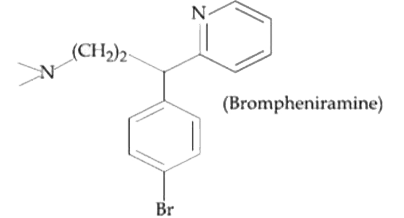Which molecule acts as a reaction centre?
Step-by-Step Solution:
1. Understanding the Reaction Center: The reaction center is a crucial component in the process of photosynthesis, specifically during the light reactions. It is where the primary photochemical reactions occur.
Hint: Think about where the light energy is converted into chemical energy.
2. Identifying the Molecule: In higher plants, the molecule that acts as the reaction center is chlorophyll, specifically chlorophyll A.
Hint: Recall the different types of chlorophyll and their roles in photosynthesis.
3. Role of Chlorophyll A: Chlorophyll A absorbs light energy and initiates the process of converting light energy into chemical energy. It is found in two photosystems: Photosystem I (PS I) and Photosystem II (PS II).
Hint: Remember the specific wavelengths of light that chlorophyll A absorbs in each photosystem.
4. Photosystems Overview:
- Photosystem I has a reaction center that absorbs light at 700 nm.
- Photosystem II has a reaction center that absorbs light at 680 nm.
Hint: Consider how these different wavelengths relate to the energy levels of the light absorbed.
5. Function of Other Pigments: While chlorophyll A acts as the reaction center, other pigments like chlorophyll B, carotenoids, and xanthophylls serve as light-harvesting molecules. They capture light energy and pass it to chlorophyll A.
Hint: Think about the importance of having multiple pigments in capturing a broader spectrum of light.
6. Conclusion: Therefore, the molecule that acts as a reaction center in photosynthesis is chlorophyll A, which plays a vital role in the light reactions of photosynthesis.
Hint: Reflect on the overall process of photosynthesis and how the reaction center fits into it.
---
- Photosystem I has a reaction center that absorbs light at 700 nm.
- Photosystem II has a reaction center that absorbs light at 680 nm.
Topper's Solved these Questions
- BOOK - ICSECHAPTER - PHOTOSYNTHESIS IN HIGHER PLANTS EXERCISE - REVIEW QUESTIONS (SHORT ANSWER TYPE QUESTIONS)19videos
PHOTOSYNTHESIS IN HIGHER PLANTS
- BOOK - ICSECHAPTER - PHOTOSYNTHESIS IN HIGHER PLANTS EXERCISE - REVIEW QUESTIONS (LONG ANSWER TYPE QUESTIONS)11videos
PHOTOSYNTHESIS IN HIGHER PLANTS
- BOOK - ICSECHAPTER - PHOTOSYNTHESIS IN HIGHER PLANTS EXERCISE - REVIEW QUESTIONS (DIFFERENTIATE BETWEEN THE FOLLOWING)7videos
PHOTOSYNTHESIS IN HIGHER PLANTS
- BOOK - ICSECHAPTER - PHOTOMORPHOGENESIS IN PLANTSEXERCISE - REVIEW QUESTIONS (LONG ANSWER TYPE QUESTIONS)6videos
PHOTOMORPHOGENESIS IN PLANTS
- BOOK - ICSECHAPTER - PLANT GROWTH AND DEVELOPMENTEXERCISE - NCERT EXERCISES WITH ANSWERS (DIFFERENTIATE BETWEEN)11videos
PLANT GROWTH AND DEVELOPMENT
Similar Questions
What is a photosystem? Which is the pigment that acts as a reaction centre? Describe the interaction of photosystem I and photosystem II,
View SolutionPigment molecule present at reaction centre of PS-I and PS-II respectively are
View SolutionPigment acting as a reaction centre during photosynthesis is
View SolutionPigment acting as a reaction centre during photosynthesis is
View SolutionThe chlorophyll 'a' molecule forms the 'reaction centre' in photosystem
View SolutionWhich of the following molecules acts as a Lewis acid?
View SolutionWhich of the following molecules contain a chiral centre?
View SolutionThe following molecule acts as an :
 View Solution
View SolutionA quantasome consists of 230 chlorophyll molecules and acts as a photosyntheic unit. It was discovered by
View SolutionWhich of the following molecules can act as an oxidising agent as well as a reducing agent ?
View Solution

